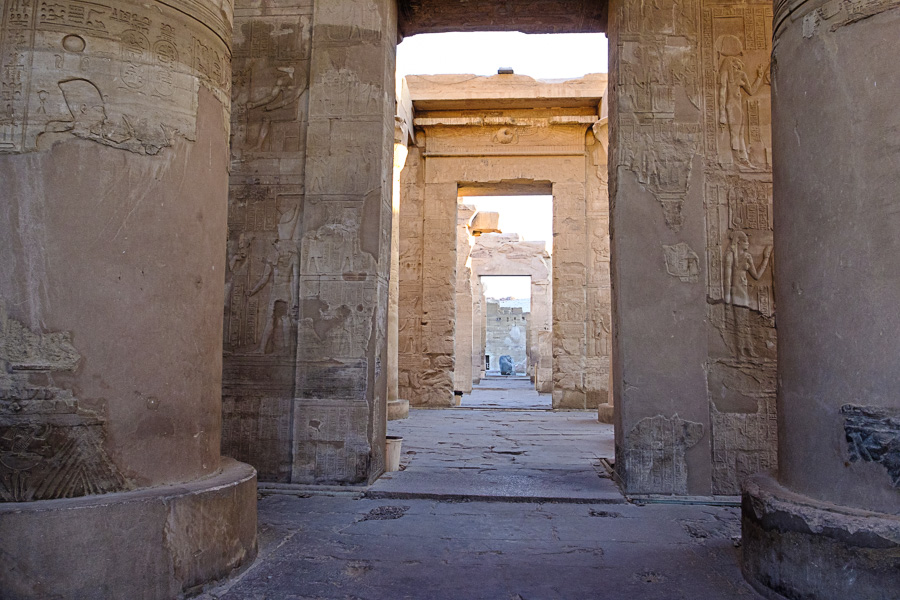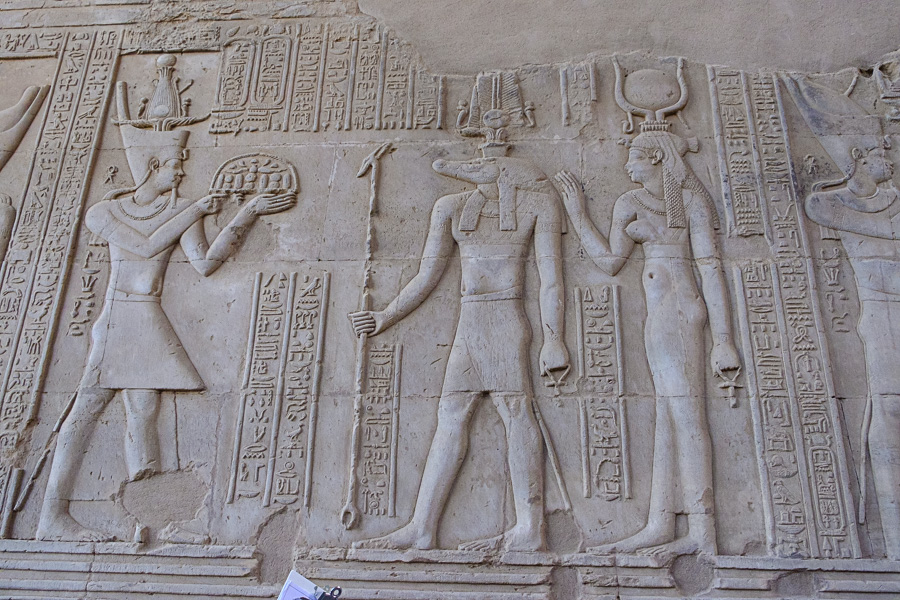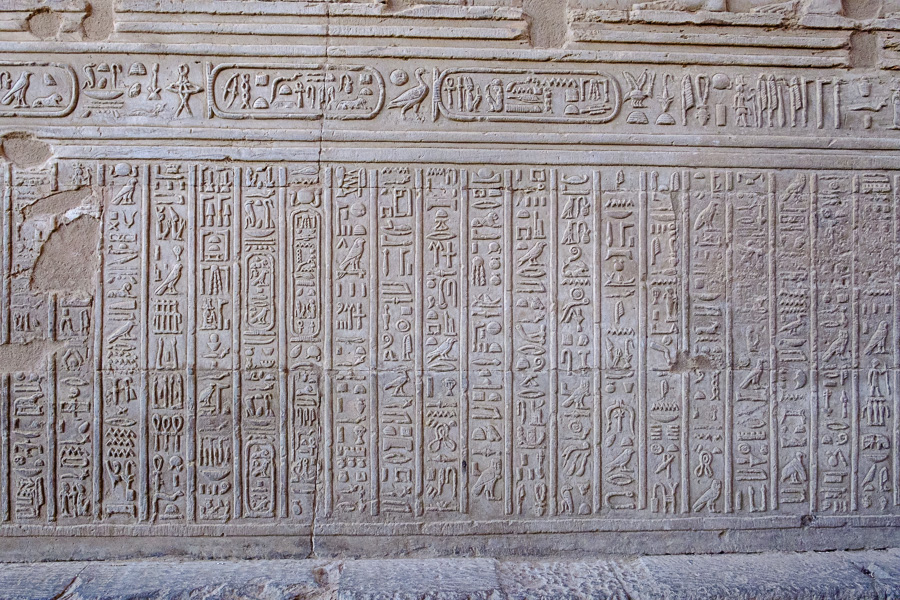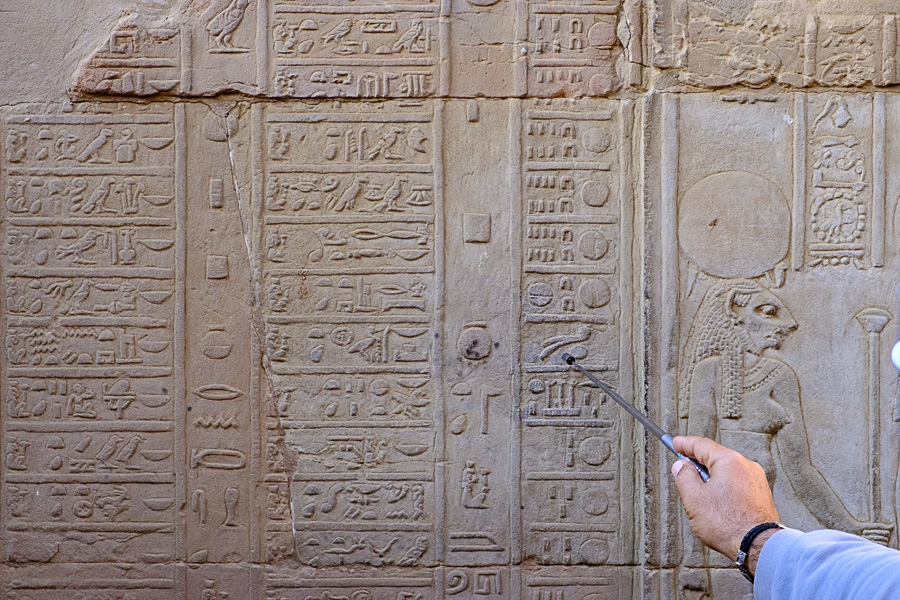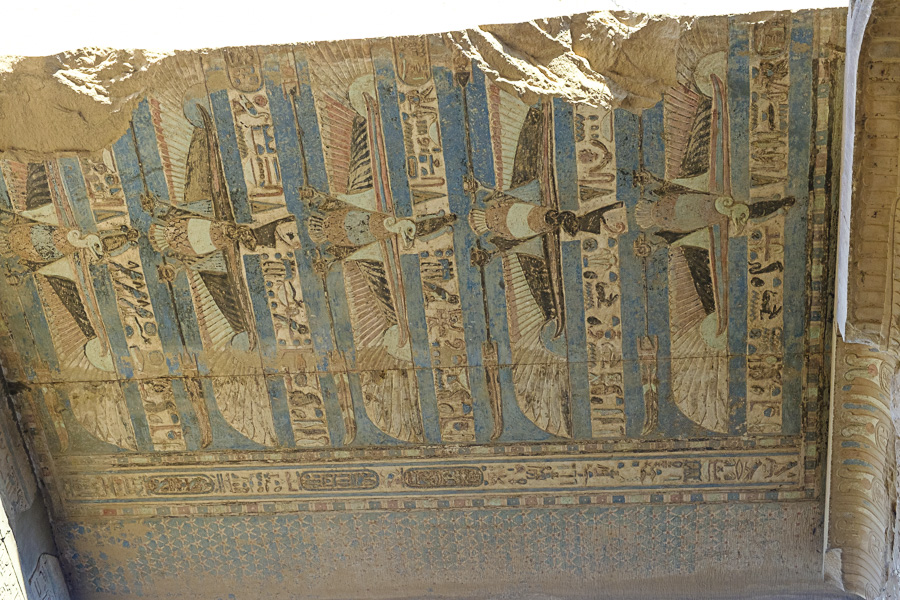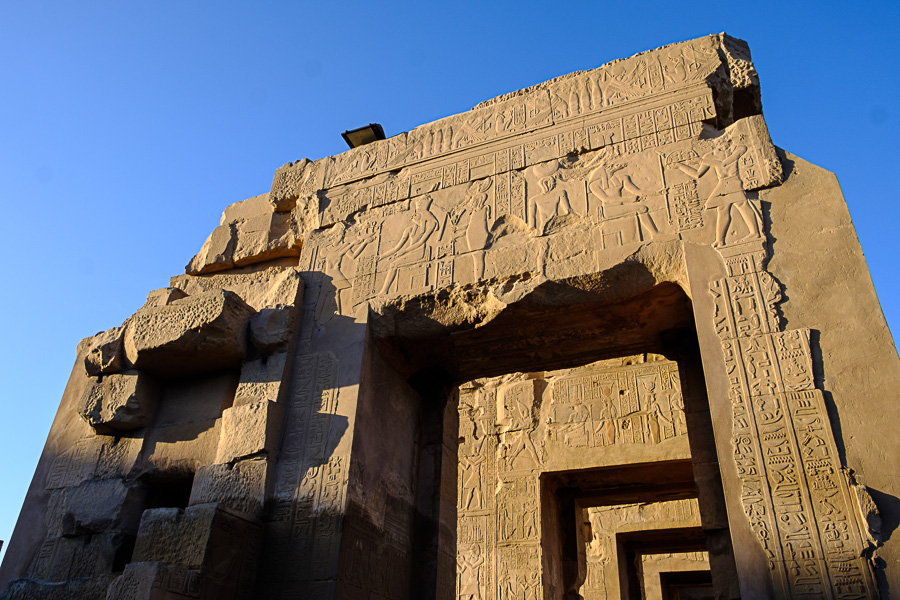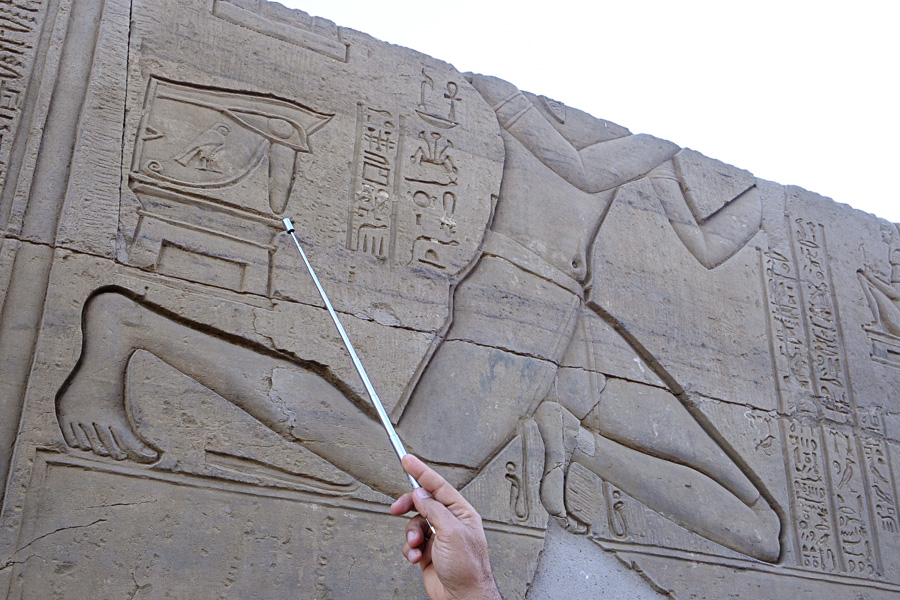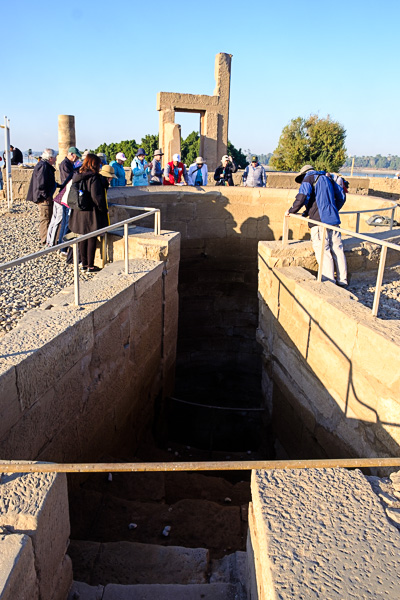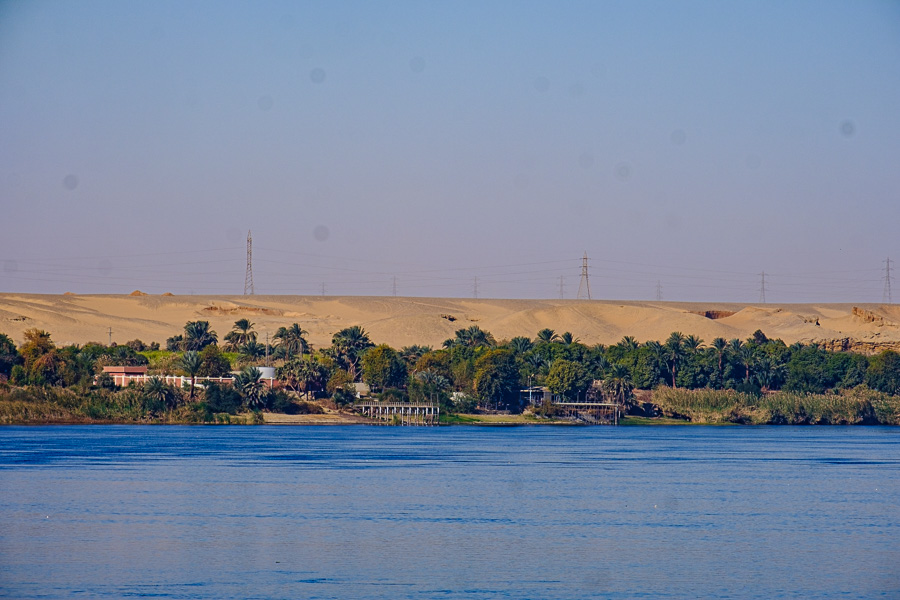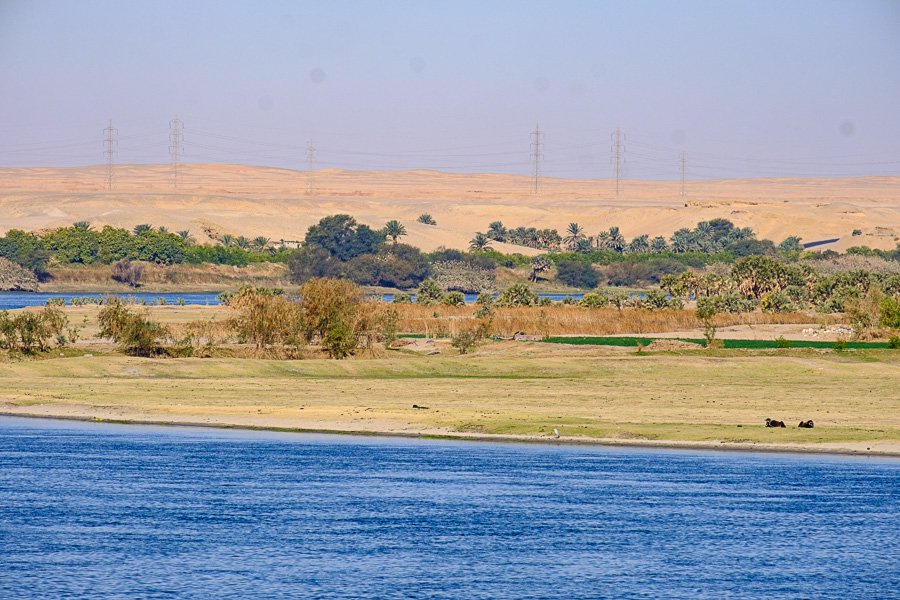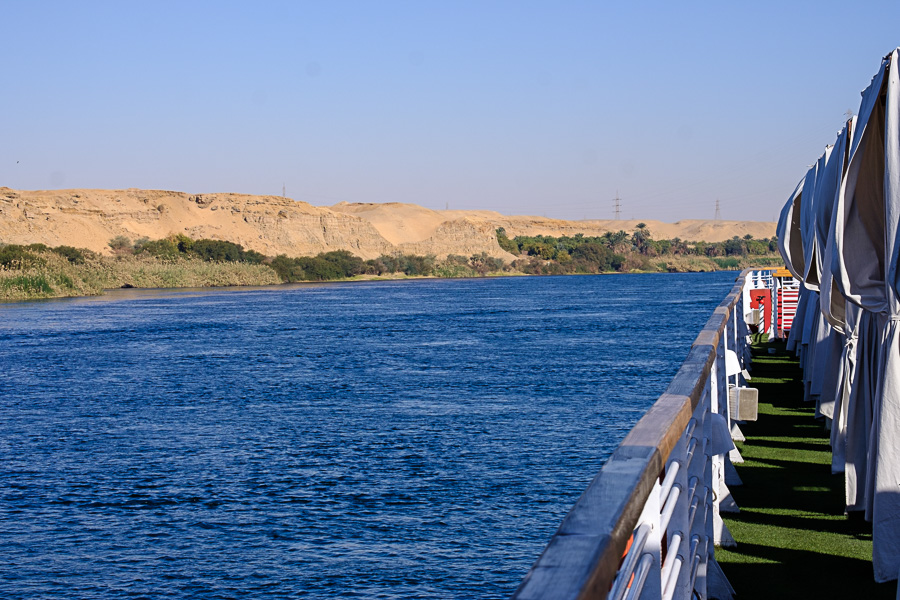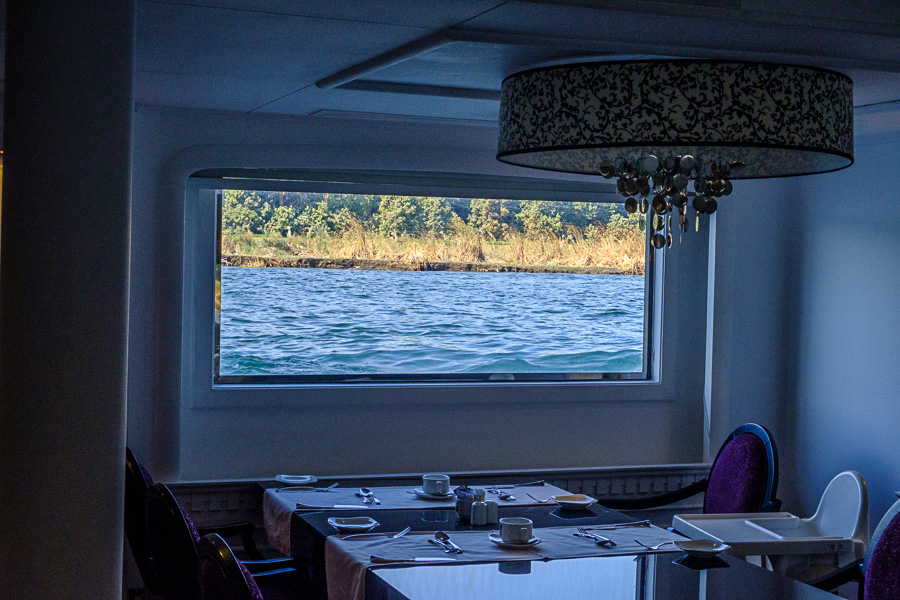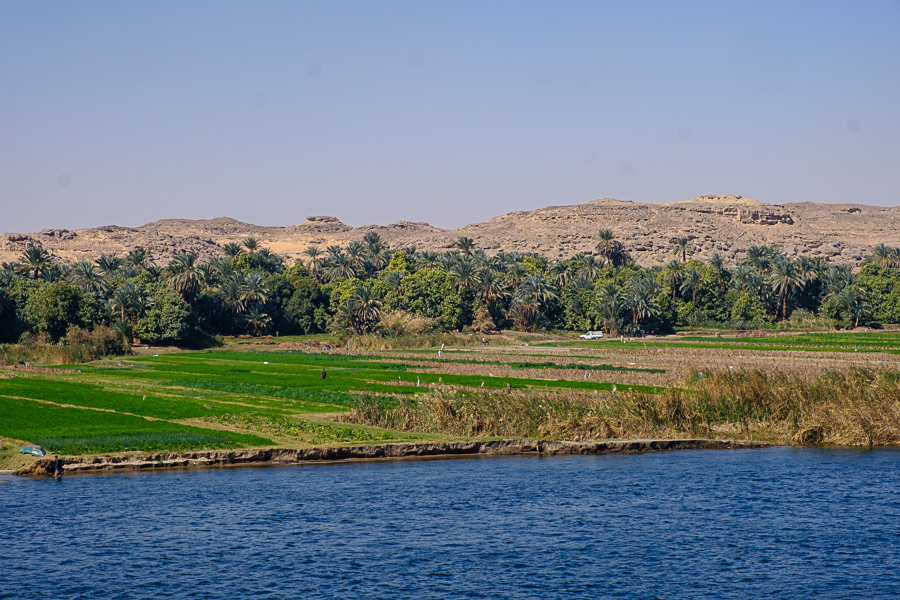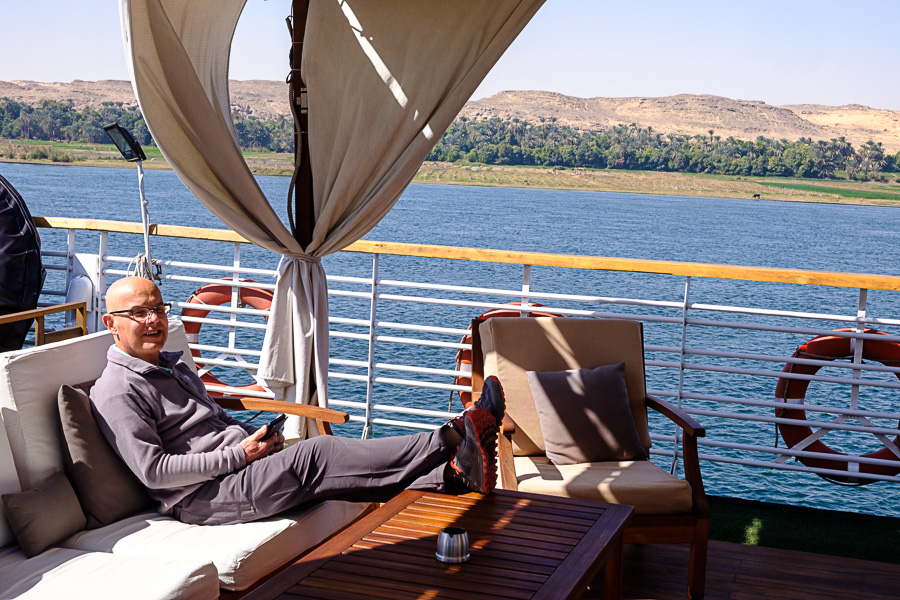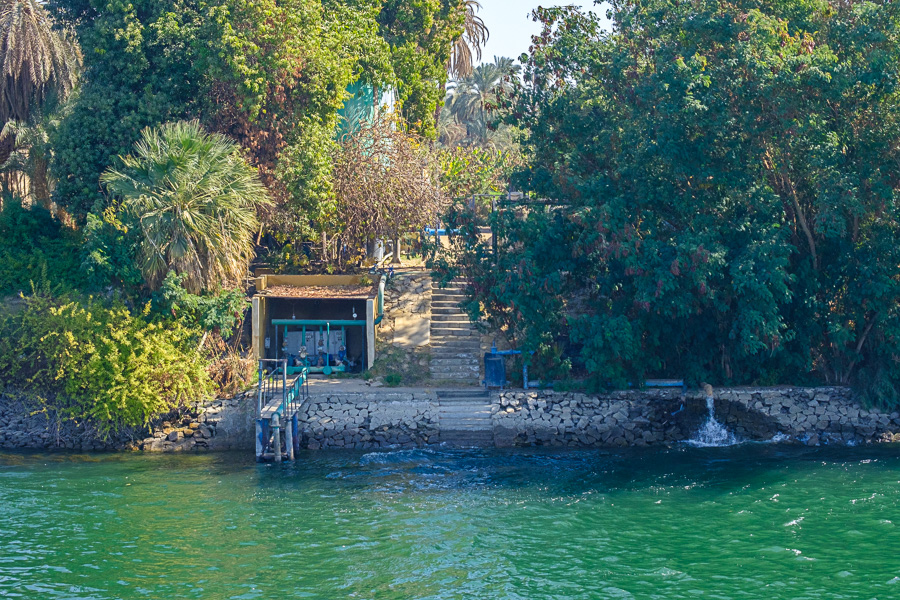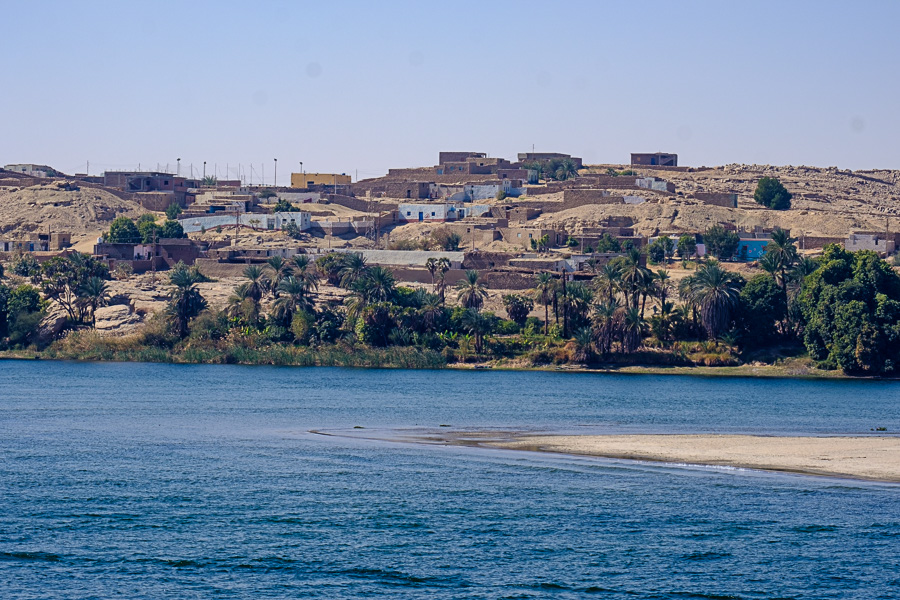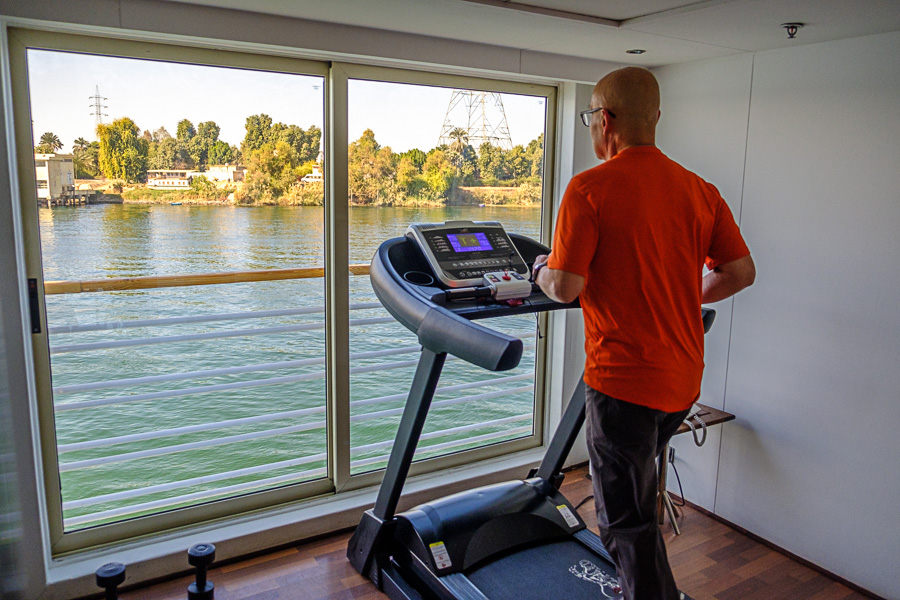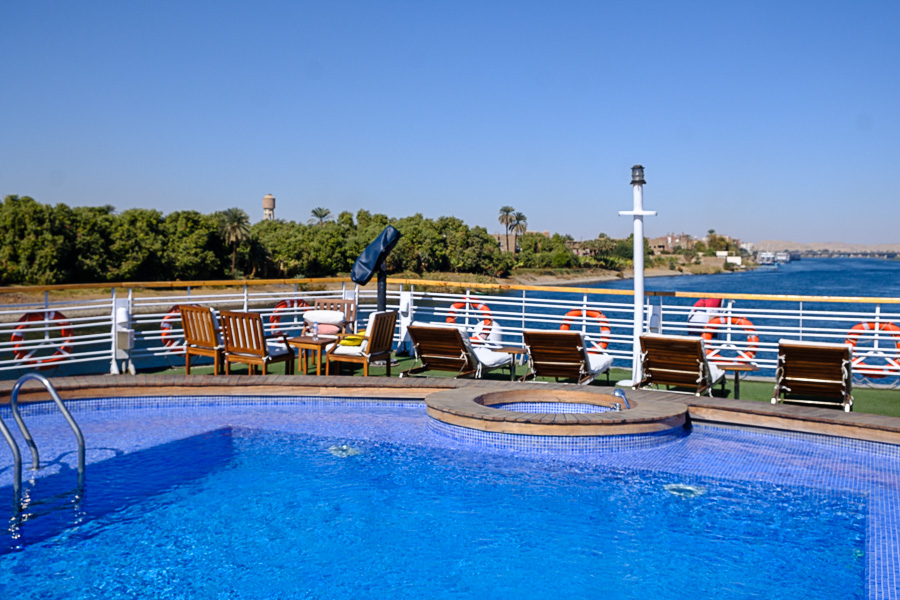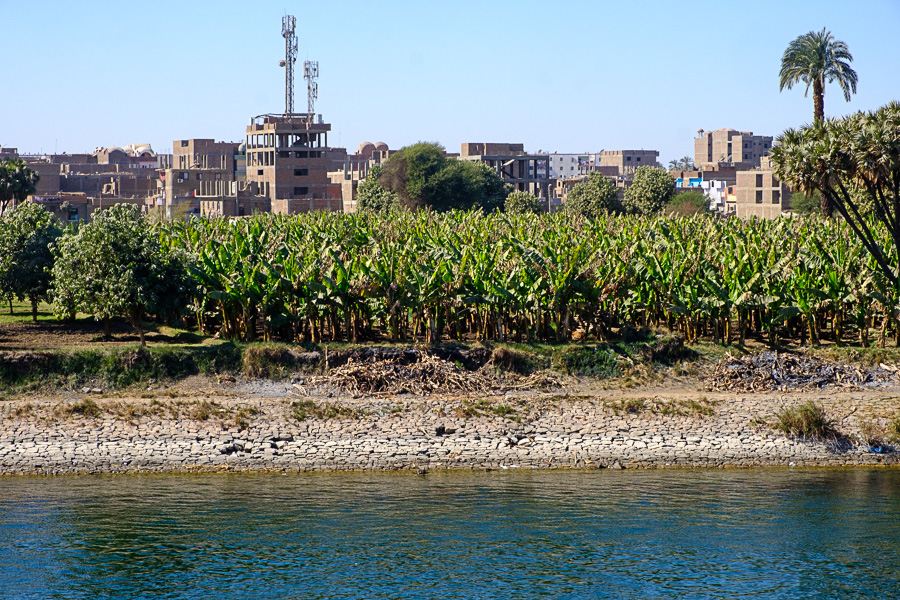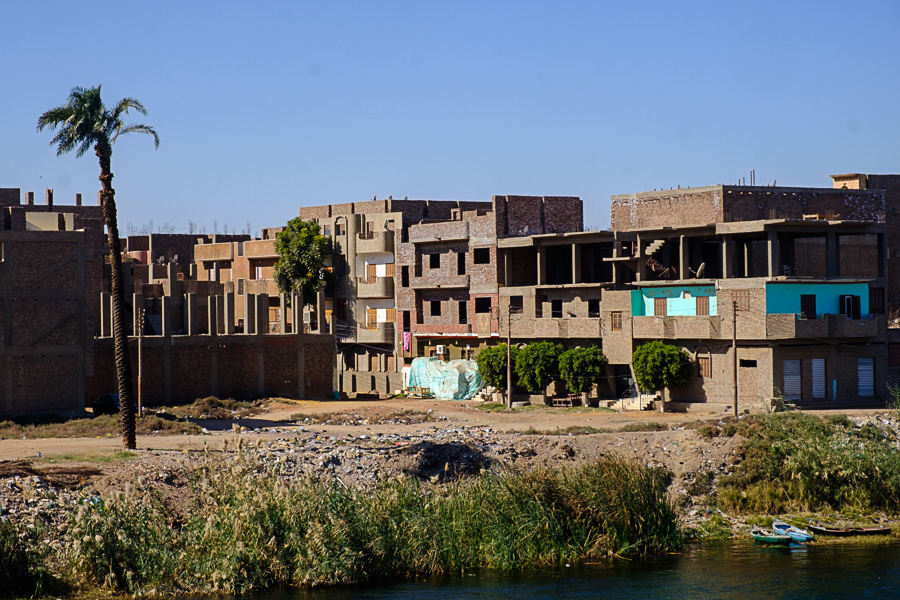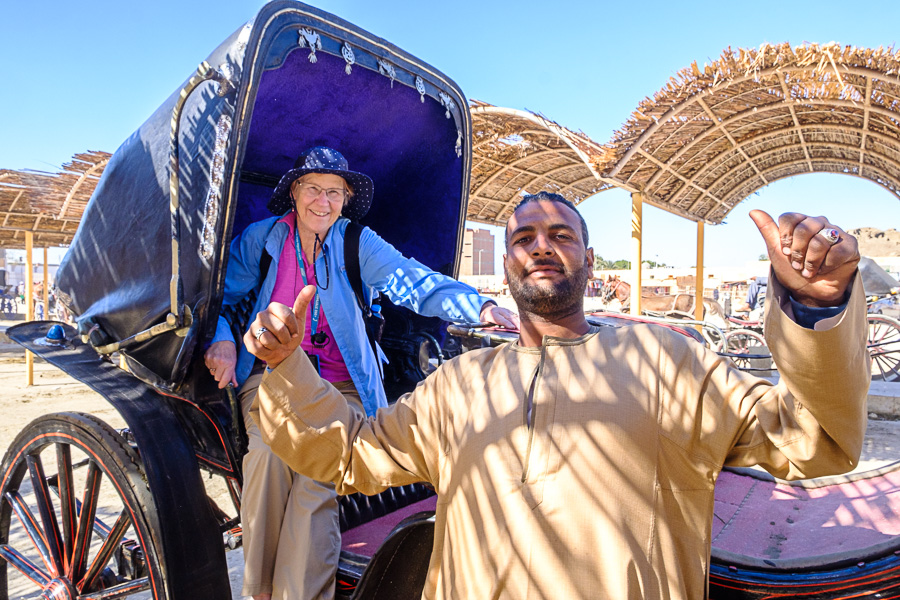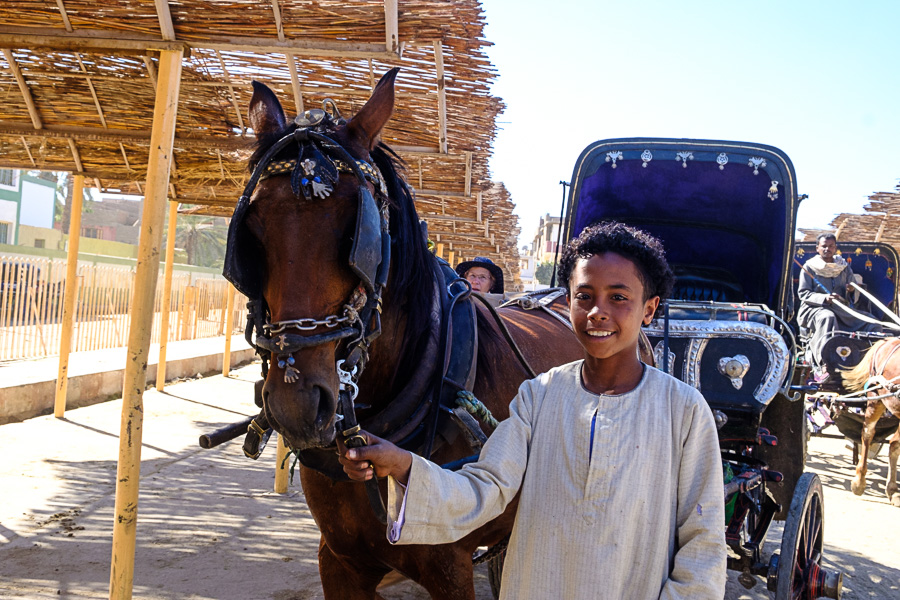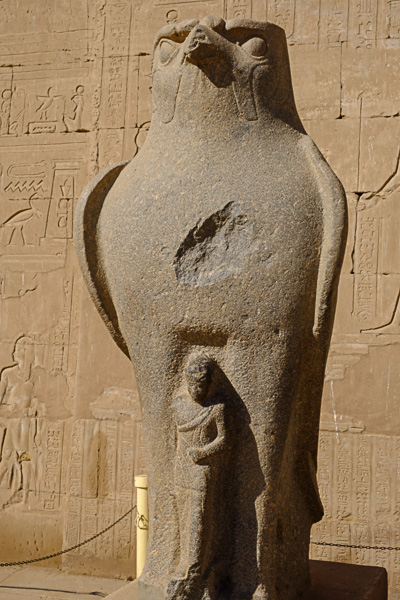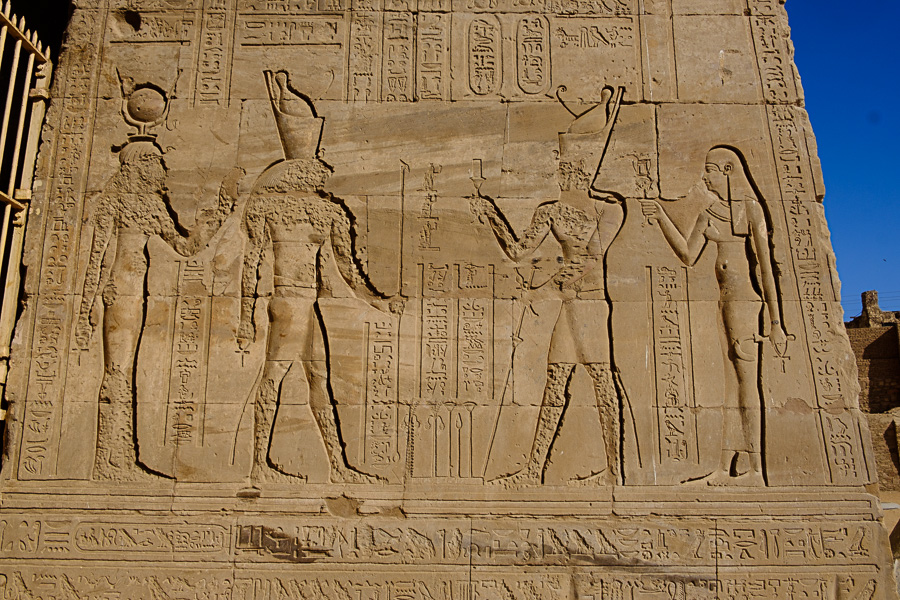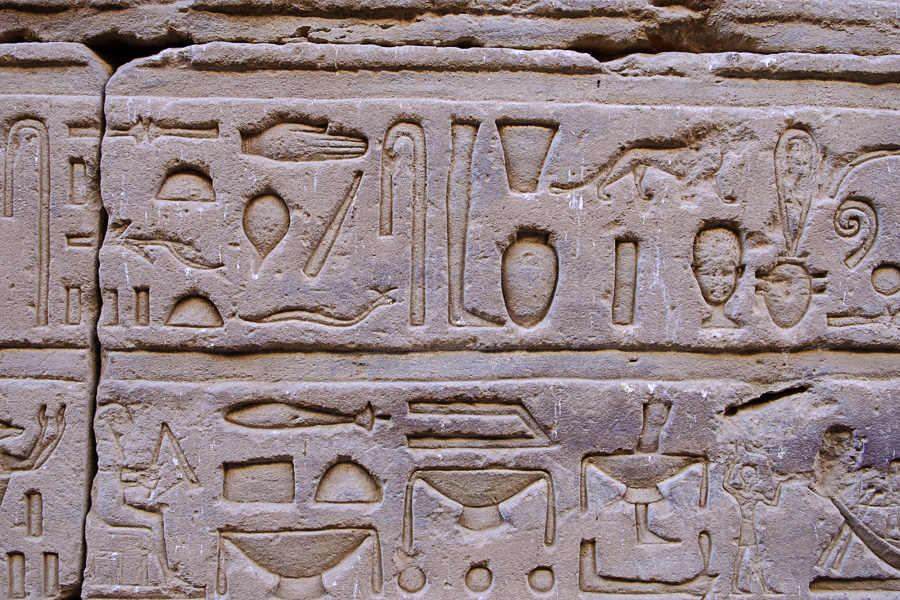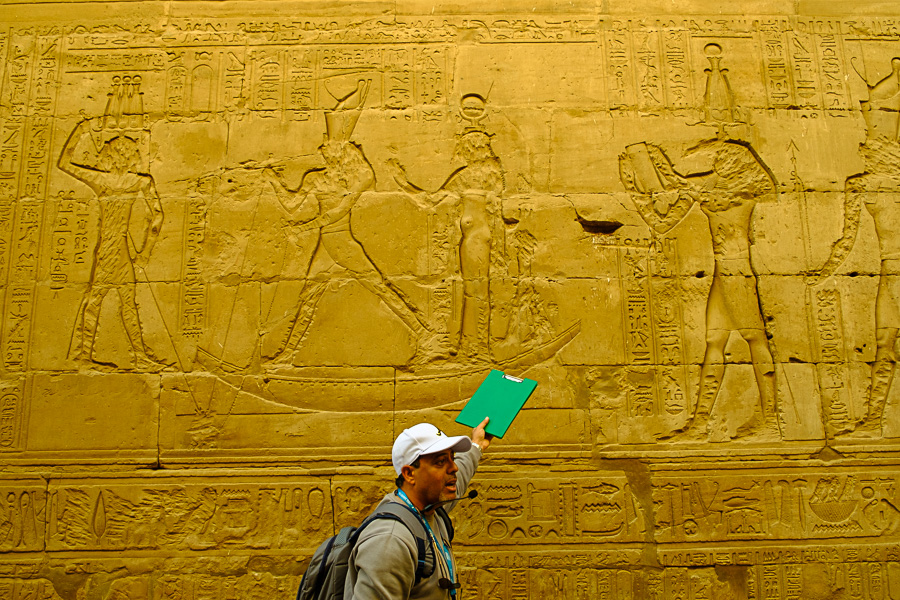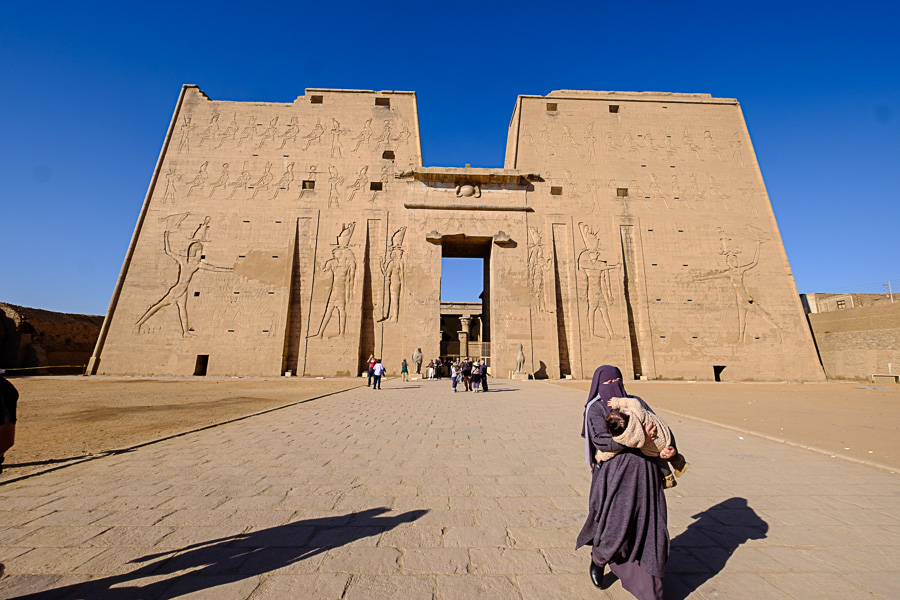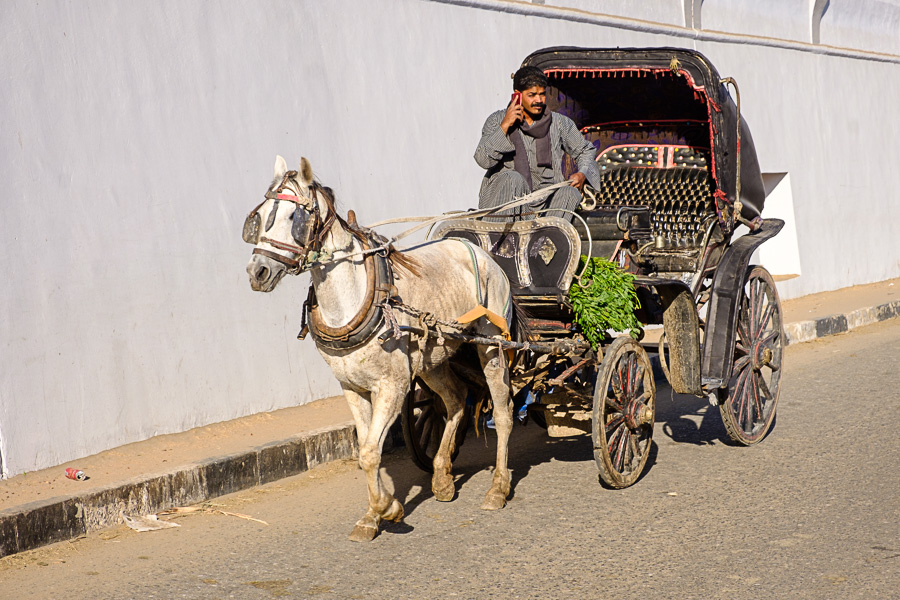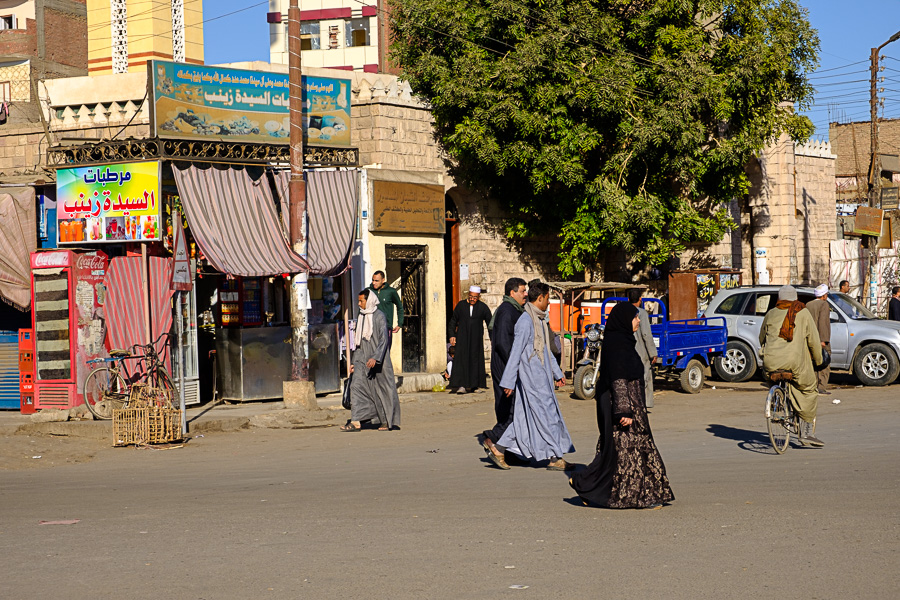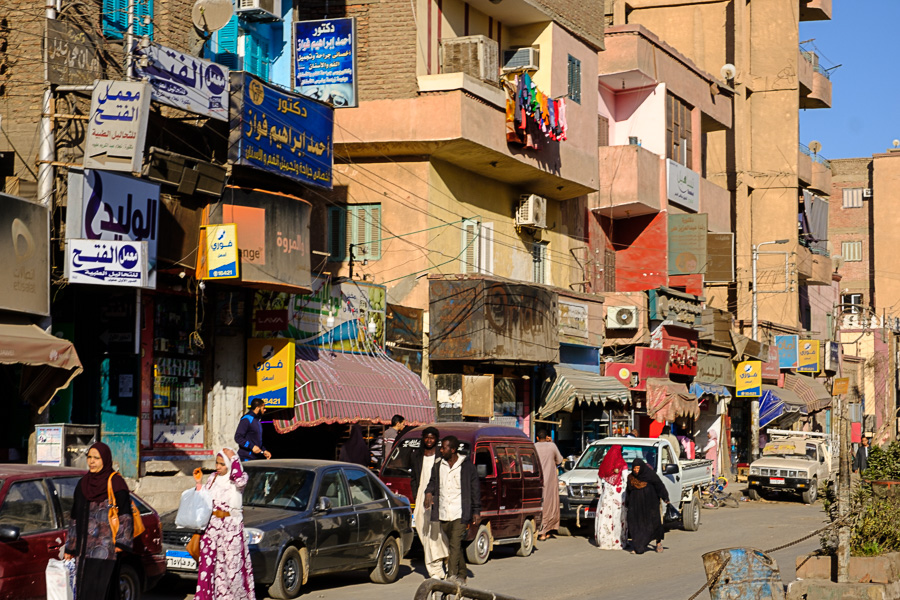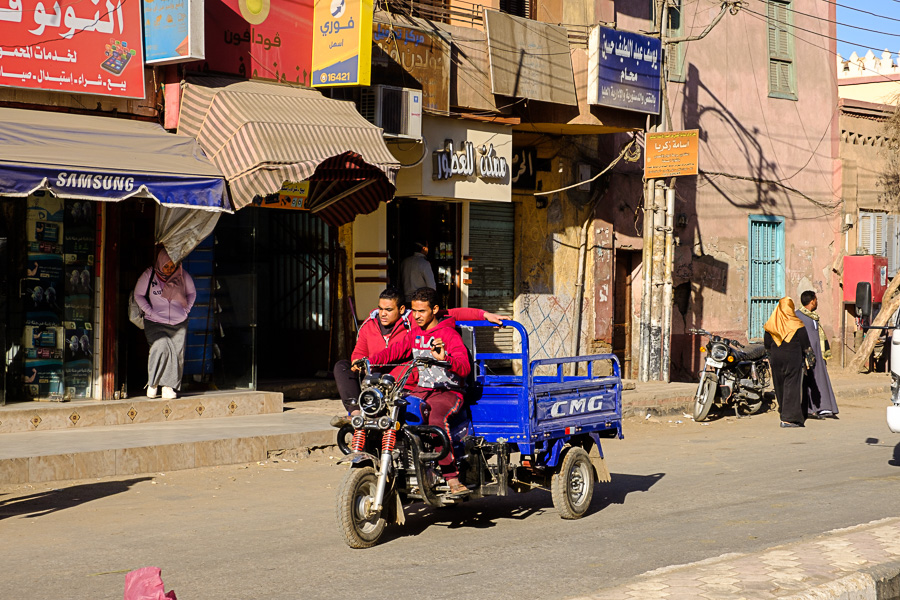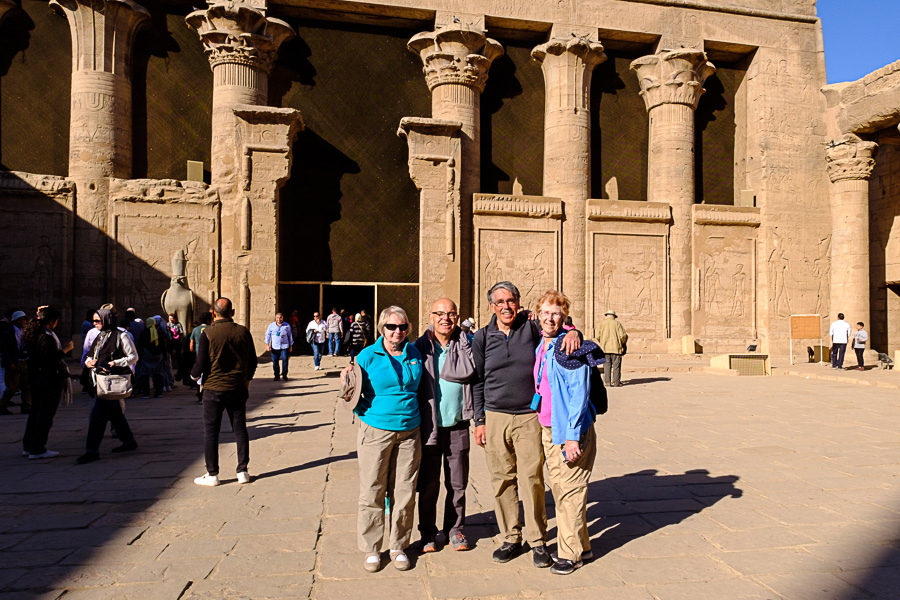The ship cruised after dinner and we awoke at Kom Ombo. We were off the boat at 7 AM so as to beat the crowds at this popular temple. Another clear, sunny day if a bit brisk that early in the morning.
Kom Ombo is a large temple compared to what we saw in Nubia. Actually, it’s two temples in one. One half is dedicated to the falcon god, Haroeris, a benevolent god that can bring good. The other half is dedicated to Sobok, the crocodile god. Sobok, and crocodiles in general, are not exactly benevolent so the hope was that by worshiping Sobok he would return the favor by not eating the town’s fishermen. They mummified crocs and there’s even a crocodile museum.
The temple displays a calendar, carved in the side of a temple wall, that gives the date and the religious rites that are to be performed each day. Hatem explained that ancient Egyptians divided the year into 12 months, each with 30 days with five days tacked on to make it come out even. A sixth day was added every four years. The 12 months were divided into three seasons corresponding to flood, planting and harvesting dates. Egyptians of this era also observed the Roman calendar and the Coptic Christian calendar in use at that time.
There is on display a wall section that depicts medical instruments used at that time (Ptolemaic era – 100 BCE or so). Many – forceps, tweezers, scalpels, even instruments used for brain surgery – are in common use today.
There is also a nilometer – a pit used by priests to measure the height of the annual flood. This measurement helped the Pharaoh’s administrators plan for feast or famine depending on the amount of water the Nile would deliver each year.
We’re back on the ship by 8:15 but we didn’t depart until close to 9. No matter, we cruised down the Nile (heading north) until we reached Edfu around 1 PM. I’ll let you see the pictures, but we’ve traveled through mostly rural areas. The one surprise for me was that the distance between the Nile and the desert is typically only a few hundred yards, not fractions of a mile. Periodically there were pumping stations sucking river water up to irrigate crops.
We traveled by horse-drawn buggy to the Edfu temple. Buses, taxis and uber are banned in the city to promote local transport.
The Edfu temple took 180 years to complete – from 237 to 57 BCE – and was used as an Egyptian temple for only 27 years. At that point the Romans had taken over and had no interest in the temple; nor did the Christians nor did the Islamite. It sat unused and became covered under 40 feet of sand – inside and out. The result was that this is the best-preserved temple in Egypt. Excavation started in 1860.
One interesting series of wall panels carves out the history of Osiris, his wife Isis, his son Horus the Younger and his brother Seth. Seth the bad guy tricks his brother into trying out a casket that fits Osiris and no one else; which Seth throws the casket with Osiris inside into the river. Isis finds the casket on shore in Lebanon (magical powers at work) and takes it home but Seth then hacks the body into 14 pieces. A battle ensues. When the dust settles, Horus has killed Osiris and goes down in Egyptian god lore as the one who conquered evil. The full story can be found at https://www.ancient.eu/Horus/
We went up on the sun deck to watch the sun set (5:45 PM hereabouts) but joined an informal discussion with Hatem and a half-dozen of our fellow travelers. Hatem held forth on the state of the Egyptian economy, touched on political matters and Egypt’s relationship with the U.S. and other countries. Egypt’s economy is struggling to say the least. But as Hatem points out the published unemployment rate has average 10% or so over the last 25 years but is at 7% now but the real unemployment rate is lower due to the “black” economy – street vendors, pony cart drivers, Uber drivers, etc. The future depends on strong-man al-Sisi’s ability to bring Egypt up by its bootstraps. He devalued the Egyptian Pound from 5 to the US dollar to 18; it stands at about 15 now. That may be good in the long run, but most Egyptians suffer in the near term from higher prices without a commensurate increase in income.
Support from Gulf states has been reduced as their economies stumble. The U.S. has provided little aid since the Arab Spring failure. Egypt has procured weapons (it has the strongest army in the Middle East) from France, Russia and China since.
Tomorrow’s another busy day: On the bus at 4:50 AM for a balloon ride over the temple complexes near Luxor, a tour of the Karnak temple, visit to a papyrus farm and another temple in the late afternoon.


